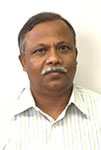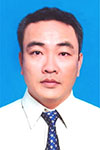Sand production assessment considering the reservoir geomechanics and water breakthrough
Sadegh Asadi A , Khalil Rahman A , Hoanh V. Pham B , Thao Le Minh B and Andy Butt BA Baker Hughes
B Cuu Long Joint Operating Company
The APPEA Journal 55(1) 215-224 https://doi.org/10.1071/AJ14016
Published: 2015
Abstract
Sand production assessment is essential from the early stages of field development planning for completion design and later for the production optimisation. Unconsolidated and weakly consolidated sandstones are prone to fail at a low flowing bottomhole pressure during hydrocarbon production. To predict the critical flowing bottomhole pressure or a safe drawdown, a geomechanical model that integrates in situ stresses, rock mechanical properties, the well trajectory, reservoir pressure, the production plan and the depletion trend is required. For a given stress field, well trajectory and production plan, the rock strength index is a key parameter that has significant impacts on the sanding risk.
This paper presents the results of a study investigating the potential of sand production from primary and secondary target reservoir rocks in a petroleum field in offshore Vietnam. A poroelastic analytical approach was used to investigate if sands will be produced from the open holes or perforations. The criterion of sanding was formulated to be the effective maximum principal stress to be greater than the effective rock strength. Observations of sanding or no sanding during drill stem tests (DSTs) were used to calibrate the sanding model to be used for sanding predictions of future production wells. The effects of reservoir pressure depletion on sanding risks were investigated using the stress arching theory. Since the water production from target reservoirs was observed in the nearby fields, the analysis was performed to investigate the effects of water production on rock weakening that may cause higher risks of sanding.
The results showed low risks of sanding for majority of the reservoirs, with drawdowns as high as 3,000 psi at the original reservoir pressure. The drawdown was, however, required to reduce to 500 psi to produce sand-free after depleting the reservoir by more than 90% of its original pressure. The results of this study led to the decision of completing the wells without using sand control equipment and to avoid sanding by controlling drawdown for the life of the well.

Sadegh Asadi received BSc and MSc degrees in mining and rock mechanics engineering in 2002 and 2005 from Tehran University of Iran, and started his career as a rock mechanics engineer at BISTUN Service Company (BRMS) in 2005. Since 2005 he has been involved with several geomechanical consulting and laboratorial studies for oil and gas projects. Sadegh completed his PhD in petroleum engineering at Curtin University in 2010, focusing on experimental and discrete element numerical simulations of the mechanical behavior of naturally fractured formations. During this time he was involved with teaching and tutoring conducted from Curtin’s Petroleum Engineering Department, and published more than 25 peer-reviewed papers international journals and oil and gas industry conference proceedings. Sadegh joined Baker Hughes’s Reservoir Consulting and Geomechanics team (RDS) in Perth in 2010, and since then he has conducted and lead numerous field development projects including 1D and 3D static and dynamic geomechanical modelling for conventional and unconventional resources, wellbore stability analysis and real-time monitoring, sand production assessment and control, rock mechanical testing design and laboratory supervision, compaction–subsidence and cap rock integrity analysis, fault/fracture reactivation analysis, and hydraulic fracturing optimisation in the Asia Pacific, Middle East, Europe and Africa regions. He has served as peer-reviewer for the Rock Mechanics and Rock Engineering International Journal since 2011, and served as a technical committee member for the SPE Workshops in the Asia Pacific region. |

Khalil Rahman worked for 20 years in different academic positions before joining the petroleum industry in 2007. He worked at several universities including the University of New South Wales and the University of Western Australia, where he taught a range of petroleum engineering subjects, conducted extensive research in petroleum geomechanics, and supervised masters and PhD students. He came to the petroleum industry by joining Helix RDS in 2007 (acquired by BHI in 2009). Khalil has advanced expertise in hydraulic fracturing and sand production prediction. He also has experience in constructing geomechanical models, wellbore stability analysis, reservoir compaction, subsidence and fault stability analysis, and drilling and completion engineering. He has successfully implemented his expertise in numerous industry studies focusing on field and reservoir development, drilling and completion optimisation, and hydraulic fracture optimisation. Khalil is now a Geomechanics Advisor in Baker Hughes. In this role he coordinates the design, optimisation and execution of hydraulic fracturing projects, and teaches hydraulic fracturing training courses in the Asia Pacific region. To date, he has published more than 70 peer-reviewed journal and conference papers, made several invited presentations, and developed and presented short courses to the industry. He serves on the editorial boards of the Journal of Petroleum Science and Engineering and the Journal of Petroleum Science and Technology, and served the Society of Petroleum Engineers (SPE) WA Section Executive Committee (2005–07) and several SPE Conference Organizing Committees. Khalil received his PhD from the University of Newcastle Upon Tyne in the UK in 1991. |

Hoanh V. Pham is Senior Well Operations Engineer with Cuu Long Joint Operating Company, Vietnam. He has eight years’ experience in various aspects of completion and production engineering. His work interests include hydraulic fracturing, tubing stress analysis, sand control, well performance prediction, completion concept and detail design. He holds a BS degree in chemical, oil and gas engineering from DaNang University of Technology (Vietnam). |

Thao Le Minh is Lead Well Operations Engineer with Cuu Long Joint Operating Company, Vietnam. He has 23 years’ experience in various aspects of well completion/well testing and well intervention in the oil gas industry. He graduated from the Geology Institute of Moscow, Russia. |

Andy Butt is seconded to Cuu Long Joint Operating Company, Vietnam, as Deputy Lead Well operations engineer. Cuu Long’s parent company is Perenco. Andy has worked in the oil and gas industry for 33 years. His main areas of experience are in drilling, workover and well services. Andy has worked in North and South America, Europe, West Africa, the Middle East and Asia. He was originally a marine engineer, and graduated from Southampton University (UK). |


